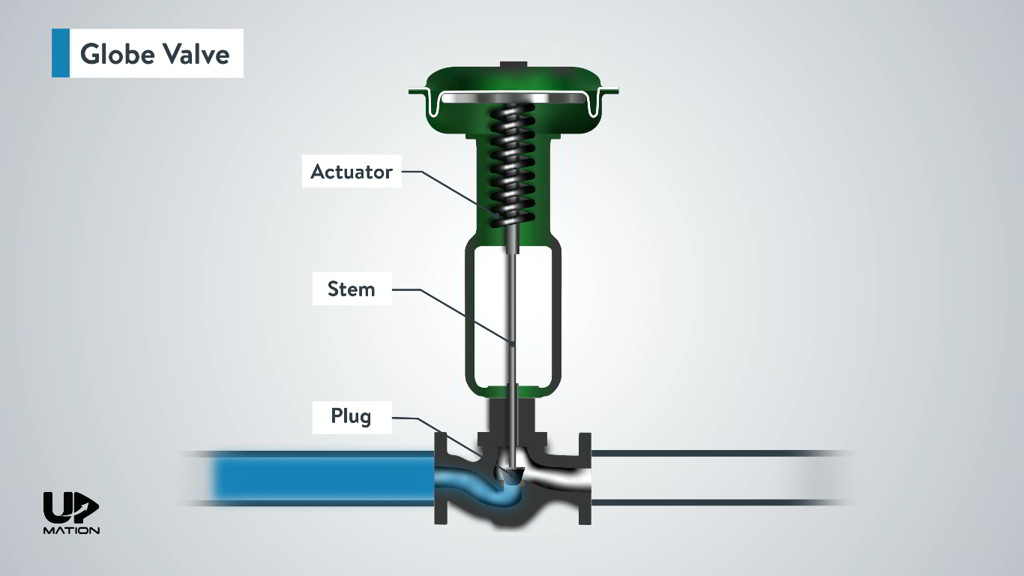In industrial automation, control valves play a silent yet critical role—adjusting the flow of fluids, gases, steam, or slurries in response to signals from a controller. But beyond this basic definition lies a world of engineering complexity, evolving technologies, and even widespread misunderstandings.

In this article, we’ll go far beyond the basics—explaining not just what a control valve is, but how it functions, what types exist, why selection matters, and where the industry is heading.
Table of Contents
ToggleWhat Is a Control Valve?
A control valve is a mechanical device that regulates the flow or pressure of a process fluid. It operates by varying the size of the flow passage as directed by an external control signal—most often from a process control system such as a PLC or DCS.
In simpler terms, a control valve is the final control element in a process loop. While sensors and transmitters measure, and controllers calculate, control valves act—physically changing the state of the system.
Core Components of a Control Valve
A modern control valve typically consists of the following:
Valve Body: The outer casing that houses internal components and comes in types like globe, ball, butterfly, etc.
Actuator: Converts the control signal into mechanical motion (pneumatic, electric, or hydraulic)
Positioner: Ensures accurate valve positioning based on input signal
Trim: Internal components in contact with the fluid—critical for flow control and pressure drop
Bonnet: Protects the stem and provides structural sealing
Control Valve Types (By Flow Mechanism)
| Valve Type | Description | Common Use |
|---|---|---|
| Globe Valve | Precise flow control, good throttling capability | Steam, oil & gas |
| Ball Valve | Fast operation, quarter-turn mechanism | On/off services, some throttling |
| Butterfly Valve | Lightweight, cost-effective for large-diameter pipes | HVAC, water treatment |
| Diaphragm Valve | For corrosive or sanitary fluids | Food, pharma, chemical industries |
| Needle Valve | Fine, precise flow control | Lab equipment, sampling systems |
Control Methods: Pneumatic, Electric, and Hydraulic
Pneumatic Control Valves
Use compressed air to actuate movement
Fast response and fail-safe options
Ideal for hazardous environments (non-sparking)
Electric Control Valves
Powered by motors, accurate and programmable
Preferred in areas with limited air supply
Slower than pneumatic but energy-efficient
Hydraulic Control Valves
High force output for heavy-duty systems
Used in oil & gas, marine, and offshore applications
Beyond Basics: Common Misconceptions
1. “All control valves are precise.”
Not true. Only properly sized and tuned valves offer precision. Oversized valves often cause poor controllability and instability.
2. “Butterfly valves are just for on/off service.”
Wrong. With proper trim and actuator, butterfly valves can offer good control in large flow systems.
3. “More expensive means better performance.”
Sometimes, a lower-cost pneumatic globe valve may outperform an electric valve in a fast-response application.
Application Insights: Choosing the Right Valve
Proper valve selection depends on more than just flow rate. Consider:
Media characteristics (corrosive, abrasive, clean, viscous)
Control range (turndown ratio)
Pressure/temperature conditions
Fail-safe requirements
Maintenance accessibility
Incorrect selection can lead to cavitation, erosion, hysteresis, and even catastrophic failure in critical systems.
New Trends in Control Valves (2025 & Beyond)
1. Smart Control Valves
Digital positioners and sensors now allow for predictive maintenance, live diagnostics, and integration into IIoT (Industrial Internet of Things) platforms.
2. Energy-Efficient Actuation
Electric and electro-hydraulic actuators are reducing the reliance on air compressors, especially in remote or offshore applications.
3. Additive Manufacturing
Some OEMs are experimenting with 3D-printed trim components for bespoke flow patterns or rapid prototyping.
4. Self-Learning Control Systems
AI-based systems are being tested that adapt valve behavior in real time for better process optimization.
Final Thoughts
A control valve is far more than a pipeline component—it is the muscle of modern automation, enabling accurate and reliable process regulation across industries. From power plants to pharmaceuticals, its role is critical, yet often misunderstood.
When chosen and configured correctly, the right control valve can lead to higher efficiency, lower downtime, and better product quality.
Looking for Industrial Control Valves?
Whether you need pneumatic control valves, electric actuated valves, or custom trim designs, our team can help.
Contact us for expert advice, product catalogs, and technical support.
